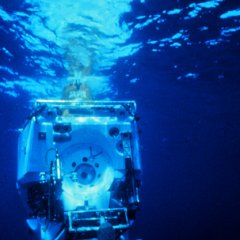Students are at the frontline of scientific inquiry as they join geologists, chemists and biologists exploring the seafloor and making amazing new deep sea discoveries. Daily updates, live video feeds, archive video footage, and email correspondence with scientists from these research vessels allow students to follow the progress of the scientific missions and find out about life on the floating laboratories at sea.
World Ocean Curriculum - Ocean Science

DOSITS provides information on the basic science of sound in the sea, how both people and animals use sound underwater, and the effects of sound on marine life. In addition to in-depth science content, there are galleries and educational resources that provide a wealth of information for educators and students alike.
Follow the red and green channel markers to Lesson Plans, Real-Time Data Sources and Activities, Teaching Tips and more! Find links to thousands of curriculum units and lesson plans on the web categorized by grade level and ocean science topic.
Their goal? To demonstrate how improved understanding of salinity-driven circulation – and its influence on climate and the water cycle – can benefit student learning. Their "Salinity Patterns & the Water Cycle" resources are aligned with the National Science Education Standards for Physical Science. Grades K - 12.
Check out Schmidt's favorite lessons and resources to help educators and their students learn about the ocean and marine careers.

